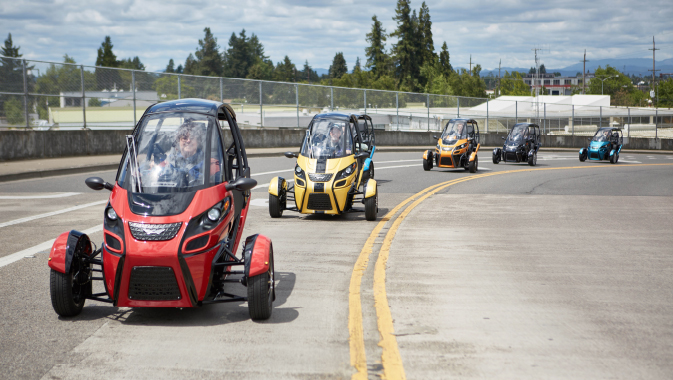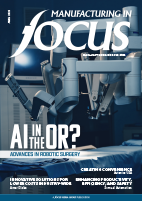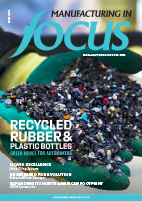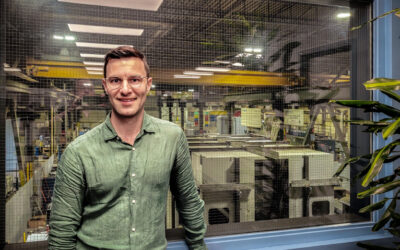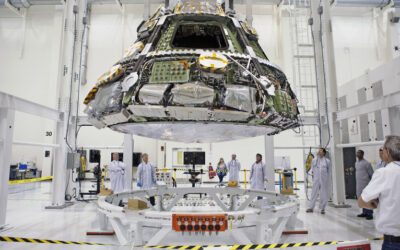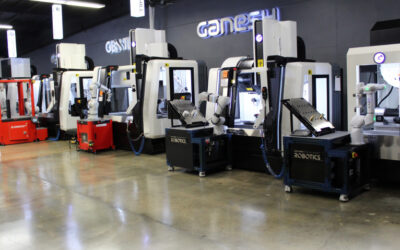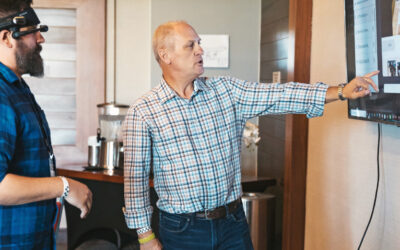The vast majority of vehicles driven on the road at any given time fit the same pattern: one person driving a relatively short distance with a relatively small amount of belongings. And the tool we use to do that is often an inefficient, four-thousand-pound, gas-burning vehicle that takes up quite a bit of space. Arcimoto aims to change that.
~
It is Arcimoto’s mission to help catalyze the transition to a sustainable transportation system with its unique Fun Utility Vehicle (FUV) product. The FUV is not meant to change movement patterns; it is meant to be the most efficient vehicle for daily trips.
Arcimoto operates out of its factory in West Eugene, Oregon with 30,000 square feet of manufacturing space. The company was established in 2007 by Mark Frohnmayer, who originally approached the market as a consumer looking for a minimalistic vehicle for daily use. The disappointment of looking for a product that simply did not exist spurred him to leap into the manufacturing industry and make his idea a reality.
The goal was to develop a more sustainable, more affordable, and more enjoyable way to travel, and the company’s first seven years involved an extensive trial and error design process. “Arcimoto, as a start-up, took a very iterative approach to development. We built, on average, about one new vehicle design per year for seven years, and it wasn’t until the eighth concept that we really found a true product-market fit,” says Mark Frohnmayer, president of Arcimoto.
The eighth generation of the FUV product will go through various stages of testing and polishing before being sold on the retail market. Currently, there are only a few customers in ownership of FUVs outside of company personnel, but the feedback thus far has been very positive. Nathan Fillion, the actor also known as Captain Malcolm Reynolds from Firefly, was the very first customer to purchase an FUV from Arcimoto.
Nathan reached out to Arcimoto in 2010 to express interest in the product because he believes it is crazy that we all drive alone in giant vehicles every day; of course, he has also always wanted his own spaceship. It is exciting for the company that a celebrity wants to leverage his own fame to help tell the world about a great and innovative product like the FUV.
The FUV also speaks to consumers’ desire for sustainability. Many environmentally aware consumers have been looking forward to purchasing an electric vehicle, yet it is not an option for most as they tend to be very expensive. The FUV is the perfect model for daily trips and commuting with a range of 70 or 130 miles, which is well above the average daily driving distance of 33 miles. The target base model price of the FUV is only $11,900, and it is highway legal in all fifty U.S. states.
The maneuverability of the FUV makes for an exciting driving experience, and there is just enough space for two passengers and their belongings. It has optional extra storage available and an optional enclosure with doors for a quieter ride. The FUV can reach sixty miles per hour in 7.5 seconds, and its top speed is eighty miles per hour.
As this is a motorcycle class vehicle, some customers may have concerns about safety. However, the FUV is manufactured with safety features that do not typically come standard with motorcycles. It has a stable platform; it has dual seat belts for both passengers; it has a crumple zone designed into the front; and the surrounding cage has been designed to satisfy the roof crush resistance test. The FUV is fundamentally stable, and it offers a highly visible platform on the road.
“We are doing everything we can to make sure that we are taking due care for the safety of our customers. We are driving them, and we’re putting our loved ones in them, so we want to make sure that we are making a vehicle that is as safe as it can be,” says Mark.
The FUV is federally classed as a motorcycle, and the requirement of a motorcycle license varies by state. Many states are passing autocycle laws for enclosed motorcycles equipped with safety features, and in those states, drivers are not required to get motorcycle licenses or wear helmets. Arcimoto is working at the state level to revise those classifications and demonstrate that the FUV does not need a motorcycle endorsement to drive it.
“It takes all of fifteen seconds to learn how to drive it. It doesn’t require countersteering; it doesn’t require leaning; it doesn’t require you to use a clutch and a funky motorcycle shifter. It’s a very simple user experience,” Mark describes, as he drives his very own FUV.
Arcimoto is charting a new category in the market, and it does not have much competition. There is no other product in the domestic market that aims to be a daily utility vehicle for two passengers to ride in comfort. Other products that could be compared to the FUV include the Can-Am Spyder, the Smart Car, and the Renault Twizy, which is a European quadricycle. However, none of these products boast the same focus on daily utility, which is what distinguishes Arcimoto in the market today.
At present, Arcimoto has sixty-five awe-inspiring employees who express a real satisfaction in their work every day. “I think all of us feel a real sense of gratitude that we are able to spend our days tackling a problem that we see as a very meaningful problem to solve,” shares Mark. “And that we get to do it with something that is this much fun.”
As it turns out, bringing a vehicle product into the marketplace is no trivial undertaking. With such a unique product, Arcimoto has to build experience centers for customers to try the product in depth before buying it. The company has also dealt with the challenges of ongoing maintenance and service needs, the requirement of all sorts of certifications, standing out in the supply chain, building the assembly process, and driving down the cost of the product as much as possible. “I came from the world of software, and it’s just unbelievably much harder than doing a software application – but it’s also satisfying on a whole new level as well,” says Mark.
When searching for a name for the company, Mark decided to look for a name that started with the letter A, because he figured that starting a vehicle company would be difficult enough already that it might as well sort to the top of the list. He also wanted to find an original name that did not already show up in a Google search. To evoke electricity and mobility, the name Arc-i-moto was developed to stand for ‘Electricity I Drive.’ When electric vehicles became more popular, the beginning of the company name was changed to represent the arc of the future and the brand became ‘Future I Drive’ to symbolize the identity of the next generation of drivers.
Three key principles were set down for Arcimoto from its inception. The first one is continuous improvement, which was borrowed from Toyota. It is the idea that if everyone commits to improving themselves, improving how they relate to each other, and ultimately improving the product, then the company will end up making quality products. The second principle is an environmental efficiency and a focus on the environmental impact of every part of the product and the process that builds it. Arcimoto examines where materials come from, what they are made of, what level of toxic content is involved, and how much of it is needed.
The final guiding principle at Arcimoto, fittingly, is fun. “If we’re not having fun and if we’re not making a product that’s fun, we’re ultimately not going to make the level of contribution that we otherwise would be able to,” says Mark.
Ensuring that the product is affordable is another measure of environmental efficiency and continuous improvement. To use less material and drive the cost down, Arcimoto continuously simplifies the product, and environmental efficiency is all about what is reasonable in the world today. “The less material you use, the more it will ultimately drive the cost of the product down and bring it into the realm where mere mortals can actually be participants,” says Mark.
The short-term goal for Arcimoto is to get into retail series production and learn about the end-to-end customer experience to get more useful feedback. Next year and beyond, the objective is to sell at ever escalating volumes while continuing to drive down the cost of the product. The long-term goal for the company is to turn the FUV into an autonomous, little pod vehicle to better serve the future concept of self-driving cars.
“If you look at rideshare today, it’s about eighty-five percent just one passenger, so it makes absolutely no sense that you would serve that pattern of mobility with a seven-passenger SUV that is driving itself,” says Mark. The FUV product is ideal for autonomous vehicles as a result of its efficiency, its size, and the fact that it does not cause much wear and tear on the roads. In fact, a large portion of that future mobility fleet should be comprised of smaller, efficient vehicles.

